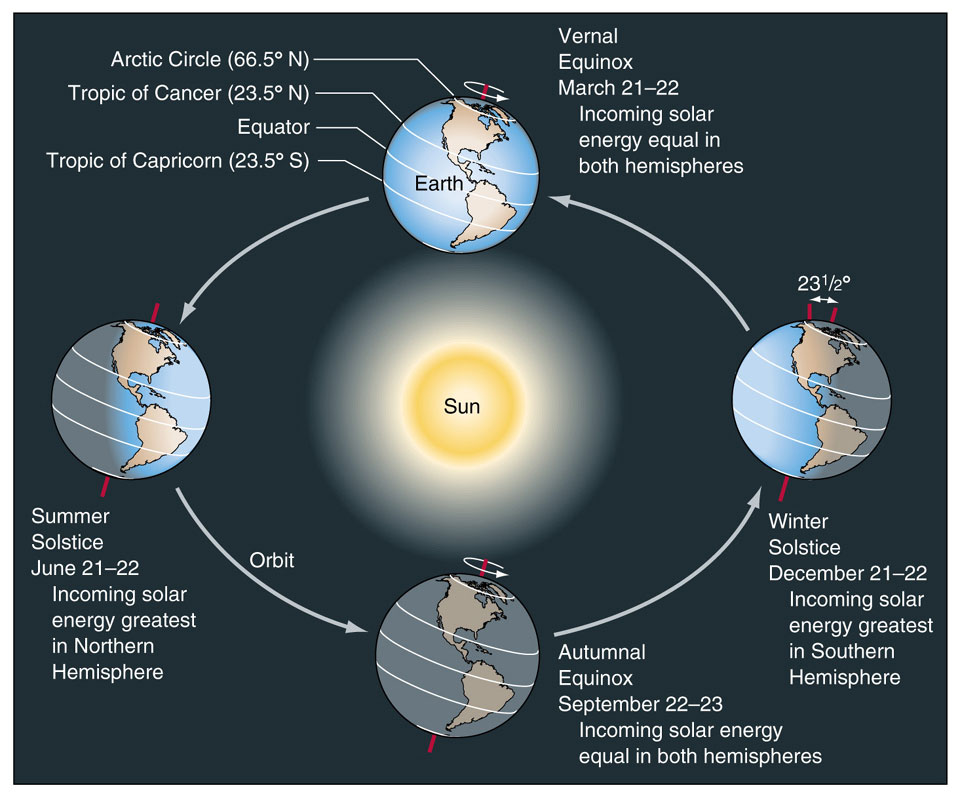StayingSustainable.com
How the Sun's Orbit Affects Solar Energy
There are a number of things that you should know about the sun and the Earth's orbit around it. We will briefly recap, and we will keep it from deviating from the solar energy concept as much as possible. None-the-less, it is important to understand at least what we are about to go through.
The Earth has an axis that is approximately 23.5° from vertical. Each day, the earth completes one full revolution about its axis, which is one day. The Earth also rotates about the sun, and completes a revolution approximately every 365 days; a full year.

The equator is the line in the center of the Earth, and is the part of the Earth that is always closest to the sun. It doesn't look like that in the graphic above, but I don't know how to do 3D animations yet... :-)
The point is, that the equator is where the sun's rays are directly perpendicular to the earth. This important because that is precisely how you get the most efficient sunlight. So, to maximize the capture of solar irradiance, you would want to lay your solar panel flat if you were on the equator. But what if you weren't?